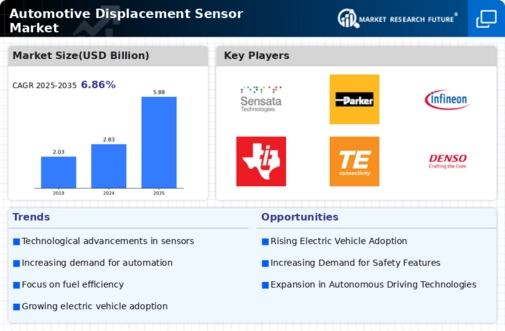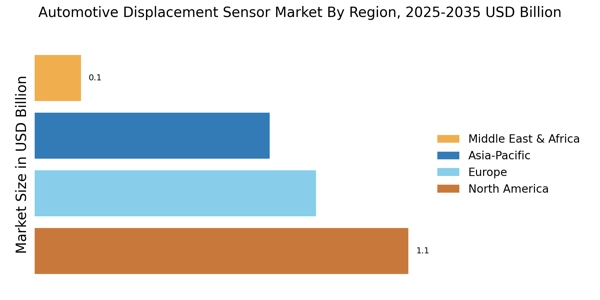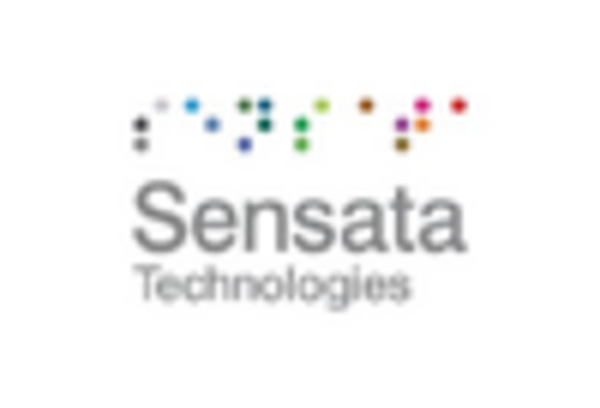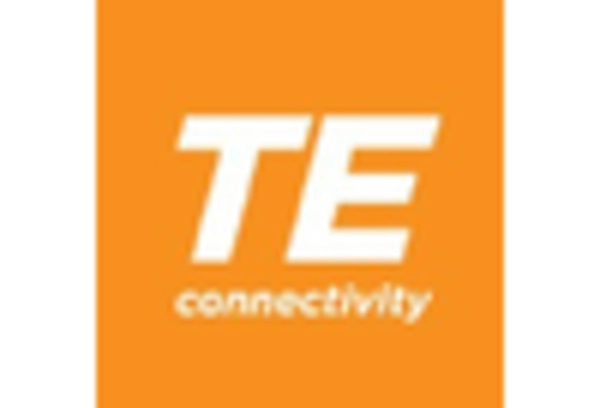Rising Demand for Fuel Efficiency
The Automotive Displacement Sensor Market is experiencing a notable surge in demand for fuel-efficient vehicles. As consumers become increasingly environmentally conscious, manufacturers are compelled to innovate and enhance fuel efficiency in their offerings. Displacement sensors play a crucial role in optimizing engine performance, thereby improving fuel economy. According to recent data, vehicles equipped with advanced displacement sensors can achieve up to 15% better fuel efficiency compared to traditional models. This trend is likely to drive the adoption of displacement sensors, as automakers strive to meet regulatory standards and consumer expectations for lower emissions and enhanced fuel economy.
Increasing Vehicle Electrification
The Automotive Displacement Sensor Market is witnessing a significant shift towards electrification, with electric and hybrid vehicles gaining traction. This transition necessitates the integration of advanced displacement sensors to monitor and manage engine performance effectively. As electric vehicles (EVs) become more prevalent, the demand for precise displacement measurement is expected to rise. Market data indicates that the EV segment is projected to grow at a compound annual growth rate (CAGR) of over 20% in the coming years. Consequently, the Automotive Displacement Sensor Market is likely to benefit from this electrification trend, as manufacturers seek to enhance the efficiency and performance of electric drivetrains.
Growing Focus on Vehicle Safety Features
The Automotive Displacement Sensor Market is increasingly aligned with the growing focus on vehicle safety features. As consumer awareness regarding safety rises, automotive manufacturers are integrating advanced safety technologies into their vehicles. Displacement sensors contribute to safety by enabling precise control of engine performance, which can prevent accidents caused by engine failure or malfunction. Recent data suggests that vehicles equipped with advanced safety features, including displacement sensors, have a 40% lower accident rate. This emphasis on safety is likely to drive the demand for displacement sensors, as manufacturers prioritize the incorporation of safety-enhancing technologies in their vehicles.
Technological Innovations in Sensor Design
The Automotive Displacement Sensor Market is benefiting from continuous technological innovations in sensor design and functionality. Advances in materials science and microelectronics have led to the development of more accurate, reliable, and compact displacement sensors. These innovations enhance the performance of automotive systems, allowing for better engine management and improved vehicle dynamics. Market analysis indicates that the introduction of next-generation displacement sensors could lead to a 25% increase in measurement accuracy. As manufacturers seek to differentiate their products in a competitive landscape, the adoption of cutting-edge sensor technologies is likely to propel growth in the Automotive Displacement Sensor Market.
Regulatory Compliance and Emission Standards
The Automotive Displacement Sensor Market is significantly influenced by stringent regulatory compliance and emission standards imposed by governments worldwide. These regulations compel automotive manufacturers to adopt advanced technologies that minimize emissions and enhance vehicle performance. Displacement sensors are integral to achieving compliance, as they provide critical data for optimizing engine operation and reducing harmful emissions. Recent statistics suggest that vehicles equipped with advanced displacement sensors can reduce nitrogen oxide emissions by up to 30%. As regulations become more stringent, the demand for displacement sensors is expected to rise, driving growth in the Automotive Displacement Sensor Market.


















Leave a Comment